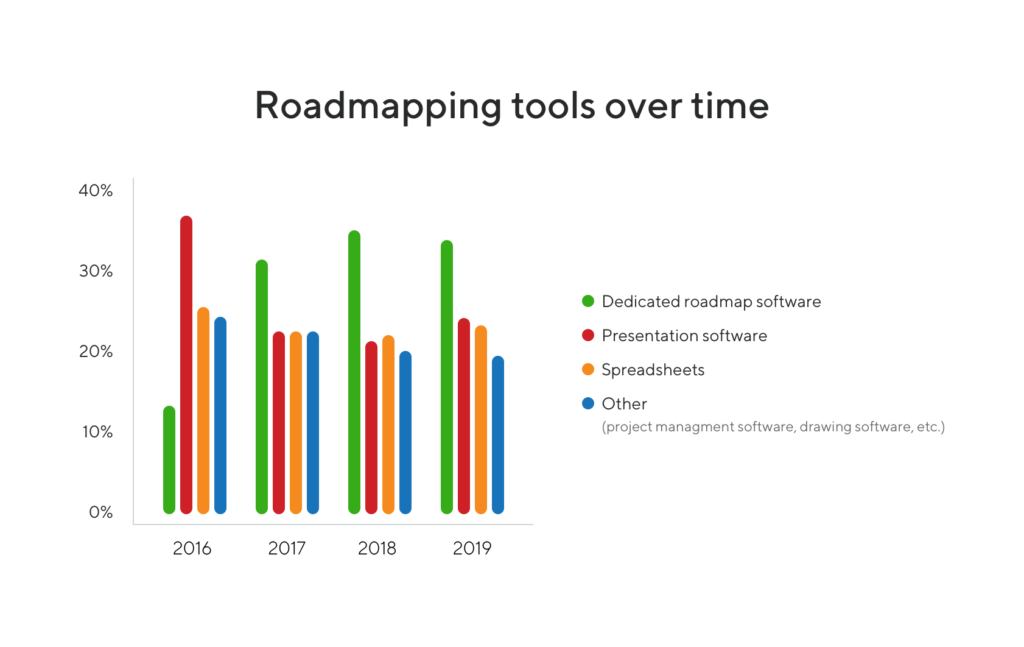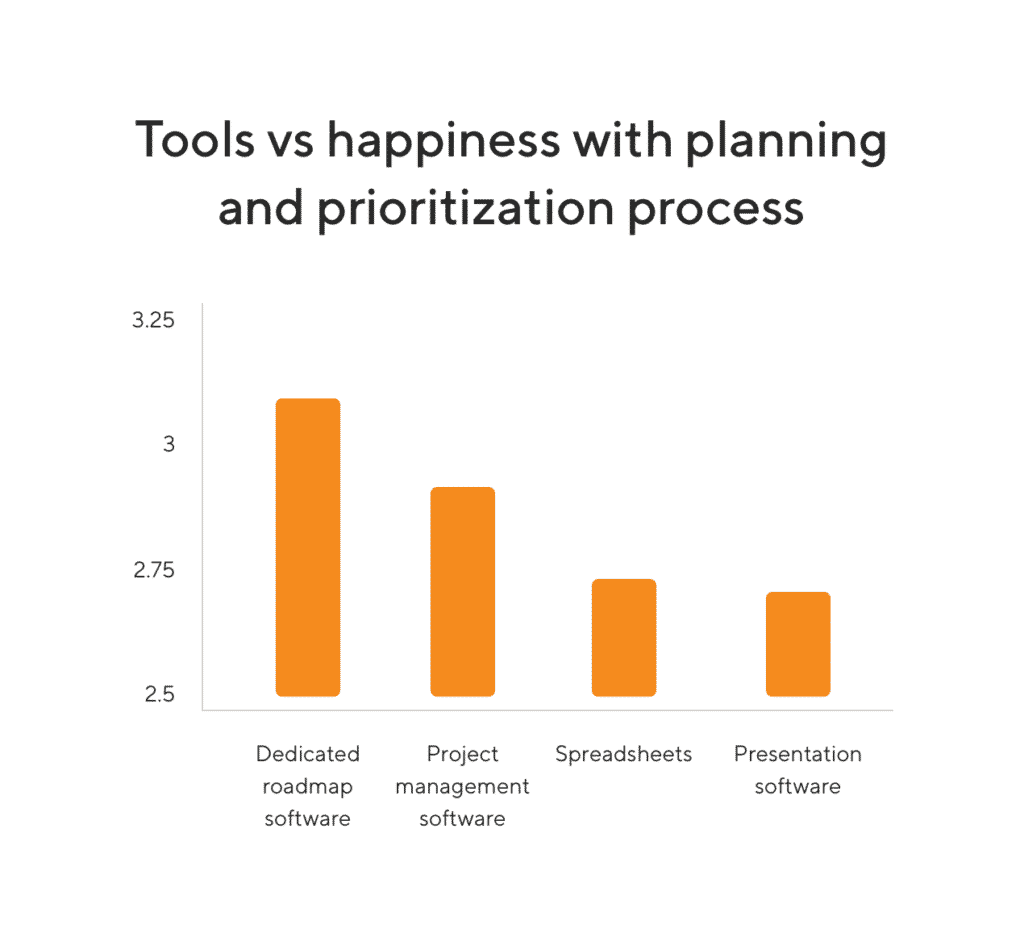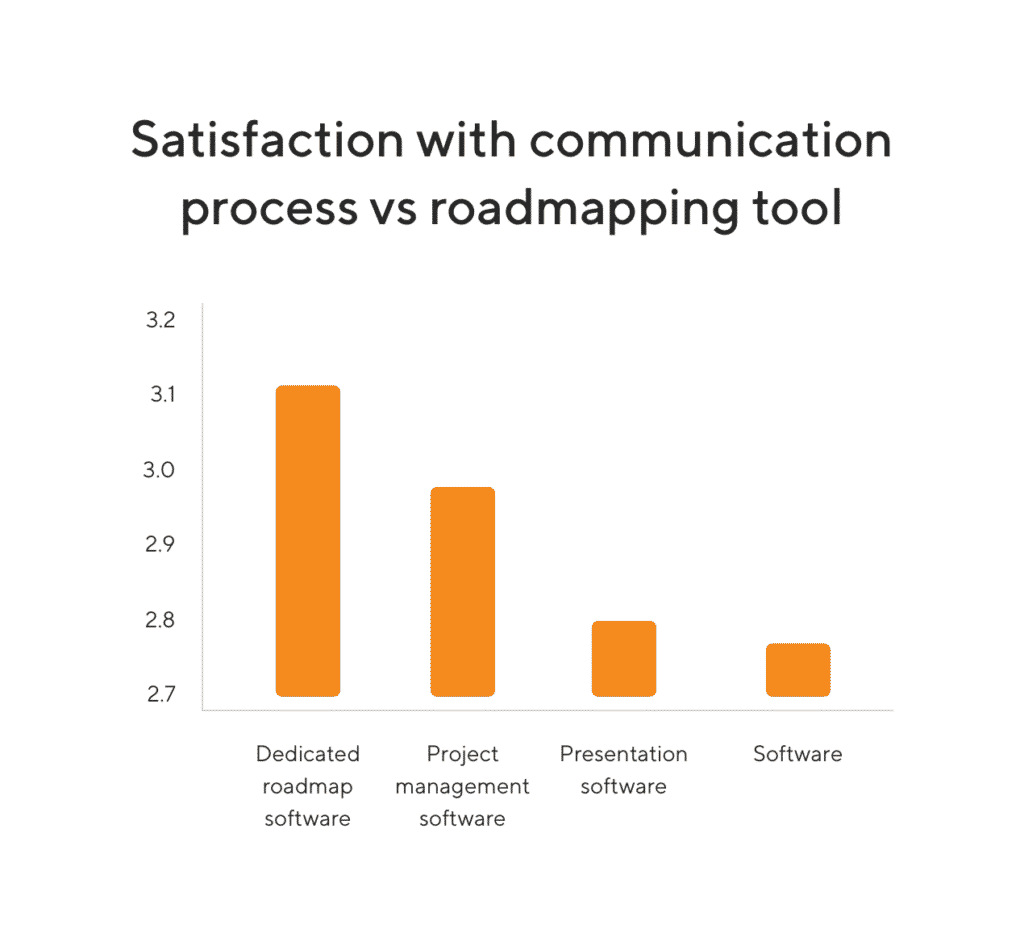Once you’ve settled on your product vision and prioritized all your initiatives, it is time to start building your roadmap.
Once you’ve settled on your product vision and prioritized all your initiatives, it is time to start building your roadmap. In this chapter, we will discuss a few best practices to keep in mind as you build your roadmap.
Visual
As a product manager, one of your key jobs is to be an evangelist for the product. A high-level visual presentation is a powerful way to help get buy-in on your strategy. This is one reason a visual product roadmap is a good way to go.
Here are some of our tips for effective visual roadmaps:
 Use color. Color is a great way to represent how your roadmap ties to the product vision or strategic objectives. Color-code each item on your roadmap to help people make the connection between each initiative and how it fits into the big picture.
Use color. Color is a great way to represent how your roadmap ties to the product vision or strategic objectives. Color-code each item on your roadmap to help people make the connection between each initiative and how it fits into the big picture.
 Use large fonts. People have a limited amount of time to digest your strategy, so use large fonts, especially if you are presenting your roadmap on a projector or in an online meeting. Think of your roadmap very much like a presentation and you’ll be ahead of the game.
Use large fonts. People have a limited amount of time to digest your strategy, so use large fonts, especially if you are presenting your roadmap on a projector or in an online meeting. Think of your roadmap very much like a presentation and you’ll be ahead of the game.
 Keep it high level. Remember that you are telling a story about how your strategy fits with the product vision. So tell the story in big, bold strokes rather than diving into the details. If you can, create logical groupings of initiatives to make the roadmap easier to grasp.
Keep it high level. Remember that you are telling a story about how your strategy fits with the product vision. So tell the story in big, bold strokes rather than diving into the details. If you can, create logical groupings of initiatives to make the roadmap easier to grasp.
Collaborative
Building a product roadmap often has to be a fluid conversation—a compromise among different priorities. A common way to collaborate during the build phase is to enable each stakeholder to lead their own initiatives within their respective areas.
Let’s assume you are a product manager for a large software company. You could have a roadmap that shows all your User Interface (UI) initiatives; another roadmap could focus on all your Application Programming Interface (API) projects; and still, another roadmap could be driven by your architects, outlining your overall software strategy.
As a product manager, you have to stay in the picture on all those initiatives. But you can’t be an expert in or even own all those areas. It is your job, however, to set priorities. In order to understand the big picture, you need to be able to roll up all of those individual roadmaps into one portfolio plan and distill an easy-to-understand picture for the executive team to earn their buy-in.
Dynamic
A product roadmap is a high-level strategic document that reflects your long-term product vision. But a roadmap does not need to be set in stone. You have to be able to update your roadmap frequently if you need to adjust your direction.
In an agile world, you can no longer predict what’s going to happen years out. The reality is that you need to rapidly adjust to market changes, customer requirements, stakeholder needs, and other influences. Therefore your roadmap needs to be a living document and allow for changes.
How often you change your roadmap depends on how many details you include on your roadmap as well as the timeframe for the roadmap. For example, if your roadmap tends to be long-term (more than 12 months) and is at a higher strategic level, it may not change as frequently as a short-term roadmap with detailed features.
Build Your Product Roadmap With the Right Tool
Building a product roadmap that serves the needs of not only the product team but also the team’s various constituents can be challenging without the right purpose-built roadmap tool. We’ve seen product teams use anything from presentation software (i.e. Powerpoint), to illustration software (i.e. Illustrator), to spreadsheets, to project management software to build and share their product roadmaps. However, over the past few years, we have observed specialized product roadmapping tools increasing in popularity among product teams.

Our most recent survey of product managers around the world found that in 2019, dedicated roadmapping software is the tool of choice for the majority of product teams, followed closely by presentation software. Dedicated roadmapping software tends to have a benefit over tools like Powerpoint and Excel because it is built specifically for product teams and their unique needs.
Looking for a Product Roadmap Tool?
For this reason, it’s no surprise that our survey also found that the product teams most satisfied with their planning and communication processes were those who used dedicated software for roadmapping.

